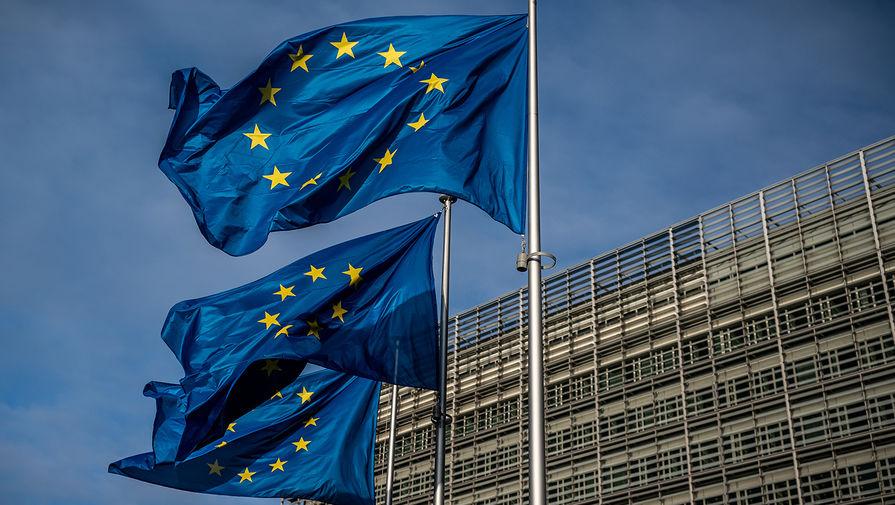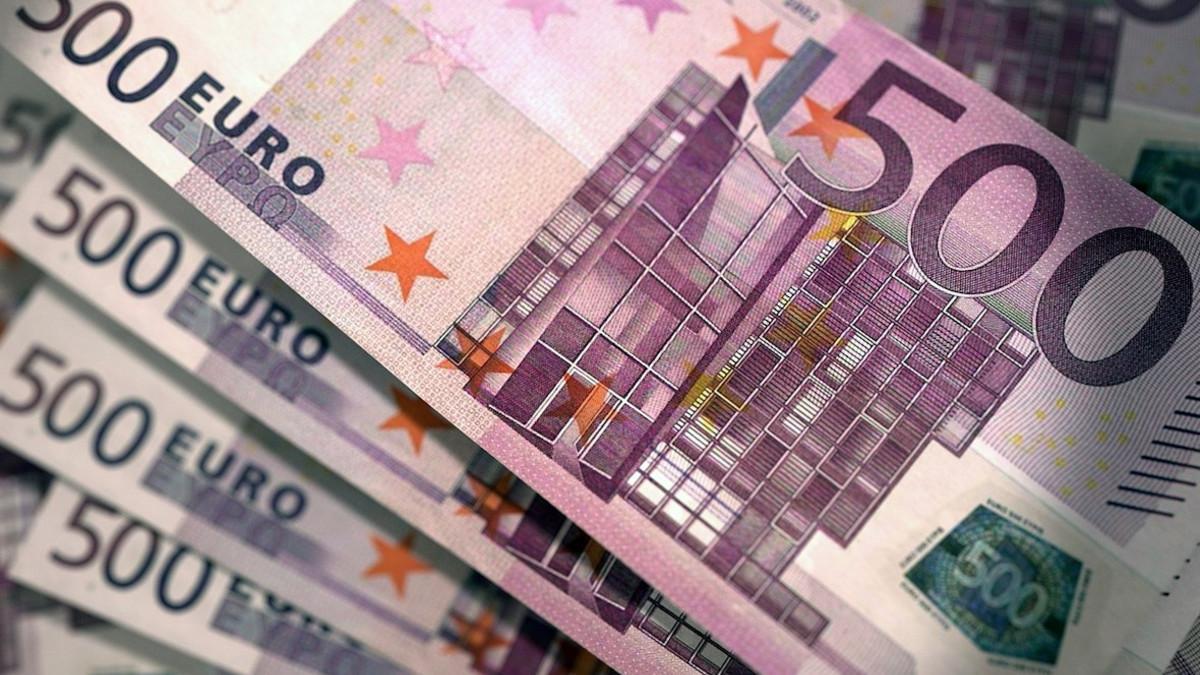EU enters turbulent phase as Trump returns to the White House Can Europe recover?
There are growing signs that the European Union, along with its economy, has entered a period of turbulence. This is evident from economic data to alarming reports coming out of Brussels. Can Europe overcome its growing gap with competitors like the US and China?
European living standards
As soon as news broke that Donald Trump would become the 47th President of the United States, the euro dropped by 1.7%. This marked the sharpest single-day decline in the European currency since March 2020, when the COVID-19 pandemic triggered a similar panic flight to the dollar.
The crisis in the EU has been unfolding for some time. Significant disruptions in economic and political institutions are reflected in the results of the recent European Parliament elections, which saw a notable rise in support for Eurosceptics. After all, criticism of the EU wouldn’t have gained traction among ordinary voters if they weren’t facing serious challenges.
This is most evident in the declining standard of living for many Europeans. Last year, 46% of respondents in a survey reported a decrease in their quality of life, while 39% expected it to worsen further. In three EU countries, a majority of citizens reported a decline in living standards. Cyprus led the way with 70% of its population saying life had gotten worse. France wasn’t far behind, with 62% of French citizens feeling that their standard of living was falling. In third place was Portugal, where 57% reported a decline in their quality of life.
The European Commission's "Eurobarometer" survey revealed that more than half of respondents believe the European Union is heading "in the wrong direction." The percentage of those who viewed the EU positively dropped from 52% in mid-2023 to 47% by the end of the year. Meanwhile, 64% of respondents expressed dissatisfaction with their governments' actions and measures to combat the cost-of-living crisis. In terms of GDP growth, the EU lagged significantly behind both China and the US

The situation has not improved this year. By the first quarter of 2024, the internal government debt of EU countries continued to rise, reaching an average of 82% of GDP across the union. However, France has surpassed the European average, with its public debt standing at 110.8%.
The main causes of the EU's economic difficulties include competition from China and the US, high energy prices, lagging digital technology, excessive bureaucracy, an ageing population, and more. But the primary issue is the mismatch between the EU's neoliberal economic model and the realities of today's world, where China, with its state-supported economy, holds a significant advantage. Alarm bells have rung within the European Commission, prompting urgent efforts to develop a strategy to rescue the EU economy by the end of the year.
Trumpization of Europe
Adding to Europe’s challenges, since the summer of this year, a new threat has loomed on the horizon: the return of conservative candidate Donald Trump to the US presidency. The Republican candidate immediately promised to declare a trade war against the EU to protect American interests.
Markets reacted swiftly to Trump’s potential victory. In anticipation of protectionist policies under the new president, the Russell 2000 index, which tracks small-cap US companies, surged by more than 6%. Ahead of expected measures to counter Chinese competition, Tesla shares, led by Elon Musk, rose by 4%, while Bitcoin jumped 8%. US banks also saw gains in pre-market trading, with Wells Fargo, Citigroup, and Bank of America up 8%, and JPMorgan and Morgan Stanley climbing about 7%.
However, immediately after the US elections, shares of "green energy" companies dropped by 8-10%, and assets of Chinese companies, including the largest electric vehicle manufacturer BYD, fell by 2.6-3.6%. Although the euro stabilized somewhat against the dollar, by November 7, the EU stock markets had experienced a decline. The pan-European Stoxx 600 index dropped by 0.54%, the DAX fell by 1.13%, and the CAC 40 slid by 0.51%.
German automakers have been hit hard as well. Shares of Porsche, BMW, Mercedes, and Volkswagen dropped by 6.5%, 6.4%, 5%, and 4.9%, respectively. However, the German-European automotive industry has long been off track. Amid the prolonged sales crisis, auto parts and equipment manufacturer Schaeffler AG announced plans to cut 4,700 jobs in Germany and other European countries. Two of its factories outside Germany will be completely shut down. This year, Schaeffler’s profits have dropped by 45% compared to last year.
Additionally, Bosch, the world’s largest automotive parts supplier, has already announced the reduction of over 7,000 jobs. With the ongoing economic downturn, the company has also hinted at further layoffs. Another auto parts manufacturer, ZF Friedrichshafen AG, plans to eliminate up to 14,000 jobs.
Volkswagen has announced the closure of three factories in Germany, while Audi has halted production in Belgium. As a result, tens of thousands of workers across Europe will soon be left without jobs.
The German Association of the Automotive Industry (VDA) has raised alarms, urging negotiations with the US to prevent the introduction of new American tariffs. Over the next decade, the EU’s automotive industry could lose as many as 186,000 jobs. In August, new car sales in Europe dropped by 18.3%, although electric vehicles were not affected by this decline.
The crisis in traditional German—and essentially European—automobile manufacturing is driven by several factors: the shift to electric vehicles (EVs), competition from China, the abandonment of cheap Russian energy supplies, and more. For example, producing electric cars requires fewer workers, and energy prices in the EU are four times higher than in China and the US. However, the VDA does not believe that the tariffs imposed by Brussels on Chinese EVs will solve the problem. On the contrary, they warn that such tariffs could lead to higher prices and increased trade tensions.
Another critical sector of the European economy, heavily dependent on the future Trump administration, is the steel and aluminium industry. Donald Trump imposed tariffs on steel and aluminium imports from the EU during his previous tenure, and since then, the issue has only been partially resolved, with further negotiations stalling ahead of the current presidential elections. Now, the European Steel Association (EUROFER) warns that if new negotiations fail to reach an agreement, European steel exports could face devastating 25% tariffs.

In the overall picture, Trump’s increased tariffs could lead to a 1.5% reduction in economic growth in the EU. In 2023, one-fifth of the EU’s exports went to the United States. The largest exports were machinery and vehicles, followed by chemicals and industrial products. Notably, the EU had a positive trade balance across all sectors, except energy supplies. In 2023, Europe sold goods worth €502.1 billion to the US, while it bought only €344.2 billion, pocketing a comfortable €157.9 billion difference.
Thus, in a way, Donald Trump is justified in his decision to shield the US market from the influx of European goods with protectionist tariffs. The top five European exporters to the US are Germany, Italy, Ireland, France, and the Netherlands, and the economies of these countries could be the hardest hit by the high tariffs.
For some EU countries, the impact of Trump's policies may not only come from higher tariffs on their exports but also from a reduction in the US corporate tax rate. Trump has promised to lower this tax from the current 21% to 15% for companies that bring their production back to the US. For example, nearly a thousand American companies currently operate in Ireland, employing 210,000 people.
Economists describe the current state of the EU economy as sluggish growth, potentially heading into recession. Trump's tariffs could significantly accelerate this process.
However, not all is bleak for old Europe. Some sectors are even anticipating profits due to the change in the US administration. Shares in the military and aerospace industries rose after the US elections. The Stoxx Europe Aerospace & Defence index increased by 2.1%, Airbus gained 0.37%, and Rheinmetall rose by 3.2%. Additionally, the expected reduction in US funding for Ukraine could allow the EU to redirect more funds toward its own defence needs.
Economic problems are leading to political instability as well. In France, a minority government has been formed, hanging by a thread and largely dependent on the far-right. Recently, the Chancellor of Germany, another major EU power, dismissed the finance minister, which threatens to bring down the entire federal government. However, after Trump's victory, the position of Hungarian Prime Minister Viktor Orbán, who follows an independent path from Brussels and was previously considered a rebel and almost a pariah within the EU, has significantly strengthened.
Perhaps the solution for Europe lies in this direction—defending national interests, maximizing the independence of each European state, and rejecting militarism and aggressive interference in the affairs of other countries. This would involve true responsibility of sovereign governments—not to a globalist elite, but to their own people, whose social rights are increasingly trampled upon amidst the ongoing economic crisis.








